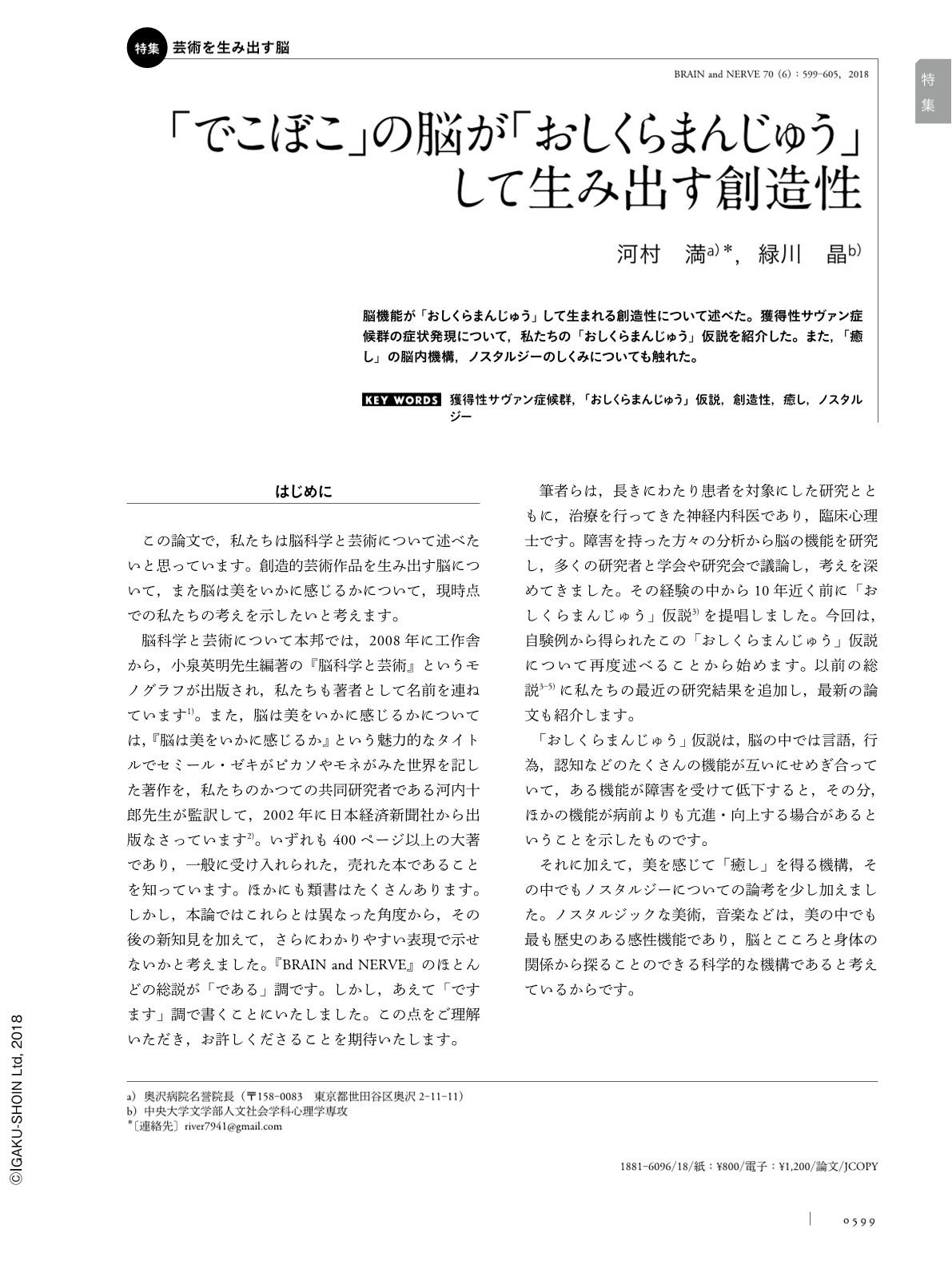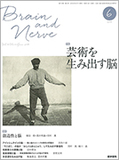Japanese
English
特集 芸術を生み出す脳
「でこぼこ」の脳が「おしくらまんじゅう」して生み出す創造性
Creativity, Cerebral Functional Heterogeneity, and “Oshikura Manju”
河村 満
1
,
緑川 晶
2
Mitsuru Kawamura
1
,
Akira Midorikawa
2
1奥沢病院
2中央大学文学部人文社会学科心理学専攻
1Okusawa Hospital & Clinics
2Department of Psychology, Faculty of Letters, Chuo University
キーワード:
獲得性サヴァン症候群
,
「おしくらまんじゅう」仮説
,
創造性
,
癒し
,
ノスタルジー
,
acquired savant syndrome
,
“Oshikura Manju” hypothesis
,
creativity
,
healing
,
nostalgia
Keyword:
獲得性サヴァン症候群
,
「おしくらまんじゅう」仮説
,
創造性
,
癒し
,
ノスタルジー
,
acquired savant syndrome
,
“Oshikura Manju” hypothesis
,
creativity
,
healing
,
nostalgia
pp.599-605
発行日 2018年6月1日
Published Date 2018/6/1
DOI https://doi.org/10.11477/mf.1416201052
- 有料閲覧
- Abstract 文献概要
- 1ページ目 Look Inside
- 参考文献 Reference
脳機能が「おしくらまんじゅう」して生まれる創造性について述べた。獲得性サヴァン症候群の症状発現について,私たちの「おしくらまんじゅう」仮説を紹介した。また,「癒し」の脳内機構,ノスタルジーのしくみについても触れた。
Abstract
We discuss creativity as a product of cerebral functional heterogeneity. To understand the pathophysiology of acquired savant syndrome, we propose an “Oshikura Manju” hypothesis, named after a Japanese game for children. We also briefly explore the mechanisms of healing and nostalgia.

Copyright © 2018, Igaku-Shoin Ltd. All rights reserved.


